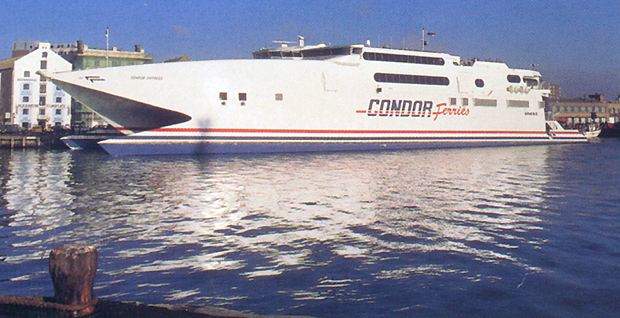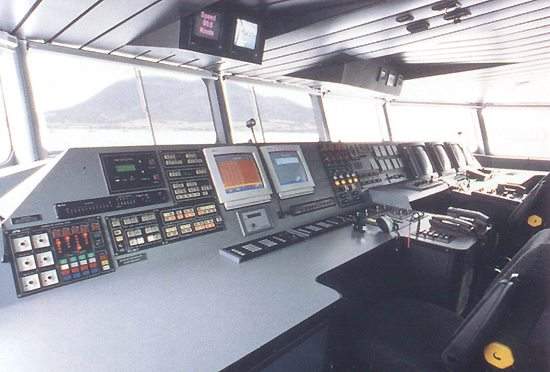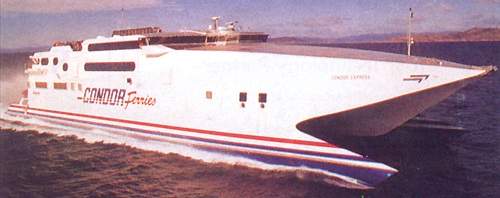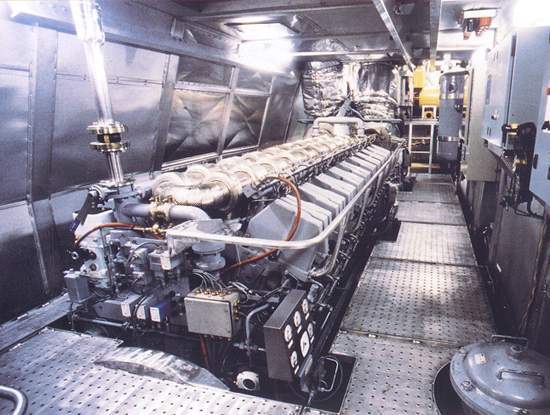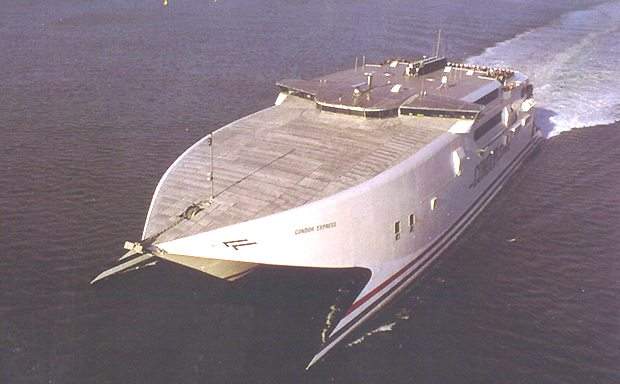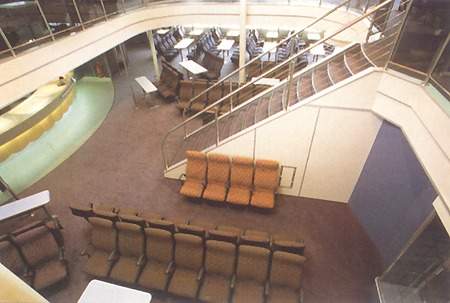The Condor Express is operated by Condor Ferries on the route between Poole, on the Dorset coast of England and Guernsey/Jersey in the Channel Islands. It is one of a number of wave piercing car ferries that have been constructed at Incat’s yard in Hobart,Tasmania.
DESIGN
Condor Express has a length of 86.26m, while its overall beam measurement, excluding fenders, is 26m. The hull beam is 4.33m and the midpoint depth is 6.75m. It has a draught of 3.50m and a fuel capacity of 61,000 litres. In trials, the vessel attained 48.70 knots over a 5min run.
The twin hulls are constructed from 5383H116 marine grade with extrusions from 6082 T6 alloy. Each of the twin hulls is divided into eight watertight compartments (the forepeak, three void compartments, long-range fuel storage tank, two 15,250-litre fuel tanks along with an additional tank for lube oil and generator fuel). At the aft of the tanks, located within the hulls, are the main engine room and the waterjet room. The hulls continue the principle of incorporating minimal buoyancy forward. This is fundamental to the wave piercing ride characteristics. The third forward central hull, lying clear of the loaded smooth waterline, accounts for 80% reserve buoyancy. The aluminium superstructure incorporates anti-vibration damping mounts.
The Condor Express has forward active T-foils fitted to the vessel which allow the gain on pitch, roll and heave motions to be adjusted in accordance with varying sea conditions, wave directions and speed. The ferry also has a Maritime Dynamics ride control system installed with yard-fitted transom-mounted active trim tabs aft. The vessel is longer than previous designs, resulting in a significant improvement in ride quality. The overall length of the catamaran has been increased by only 5m over the previous class vessels. However, the actual waterline length is increased by 15 per cent or an additional 10m. This results in a notable improvement in recorded accelerations in bow quartering sea with significant wave heights of up to 4m.
FACILITIES
Vehicles are accommodated in the main vehicle garage deck and two upper decks located forward. This enables the Condor Express‘ drive-around loading and discharge arrangement. These three levels provide capacity for up to 200 cars. The aft part of the deck is strengthened to accommodate up to four coaches in the place of 24 cars.
There are two passenger levels with the larger main deck level being slightly raised aft. Stairwells each side aft and ramps forward provide passenger access from the vehicle decks, although there is a lift for the disabled. Gates on the open deck areas aft allow foot passengers board directly into the accommodation level. Total passenger capacity is 776. Passenger facilities include full-length bar, self-service cafeteria, large shop, infant facilities and children’s play area. The interior design was commissioned from MBS Project Management. There are two large skylight domes located above the central atrium.
PROPULSION
The Condor Express is powered by four 20-cylinder Ruston RK270 diesel engines, rated to reach 7,080kW. Each engine powers a Lips LJ145D waterjet mounted on the transom. Each of the drive trains incorporates a Renk ASL60 reduction gearbox. Steering, reversing and thrust vectoring of the waterjet nozzles are carried out by a Lipstronic Jet Control System, which also provides the autopilot system. Fuel consumption is 212g/kWh or 0.21l per passenger mile in full deadweight conditions at 44 knots. Two 230kW Caterpillar generators are located in each hull to provide the electrical power. This feeds associated independent main switchboards to provide the 415/240V three-phase AC supply and distribution.

